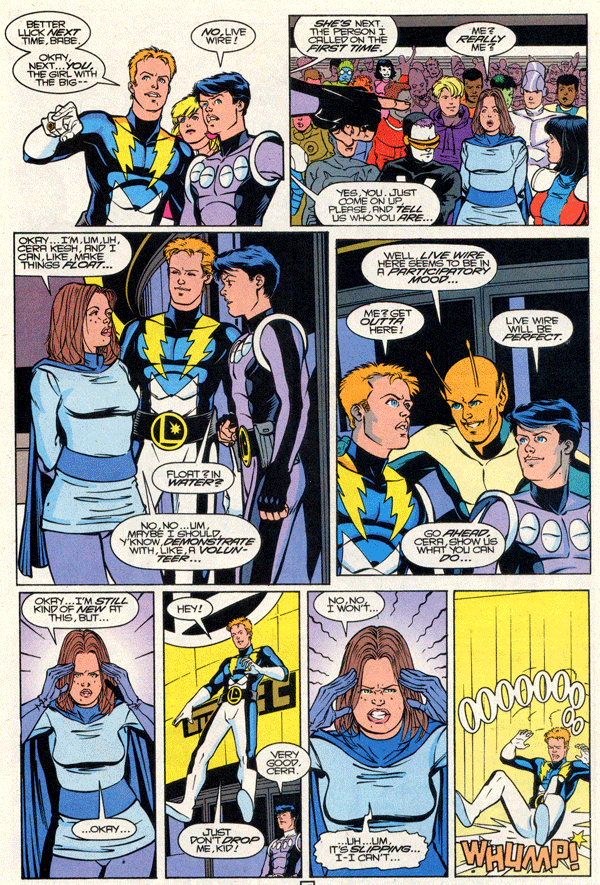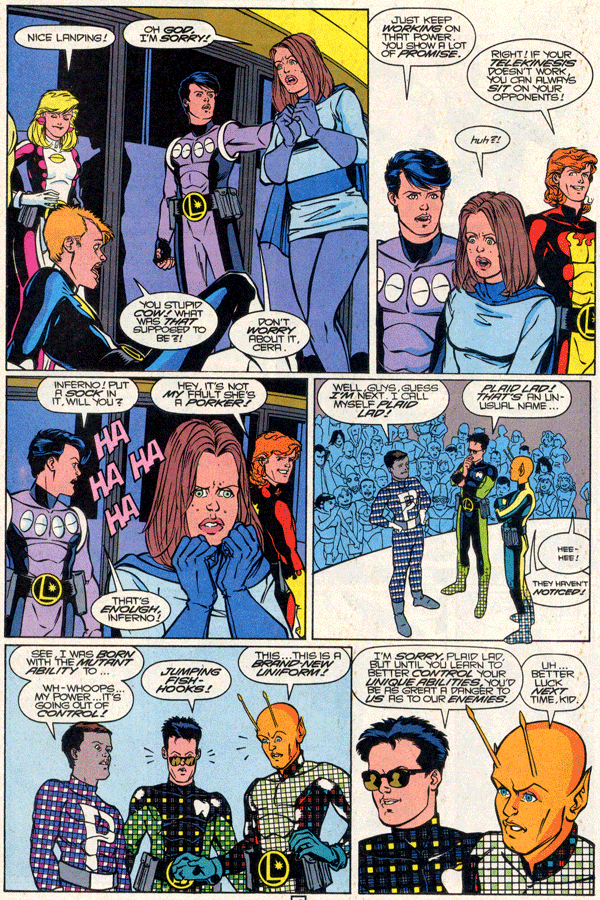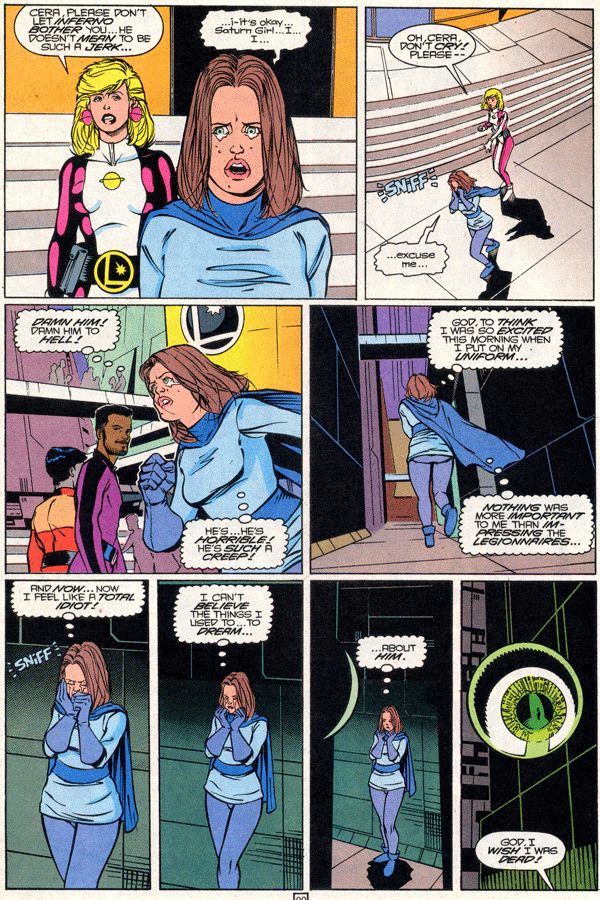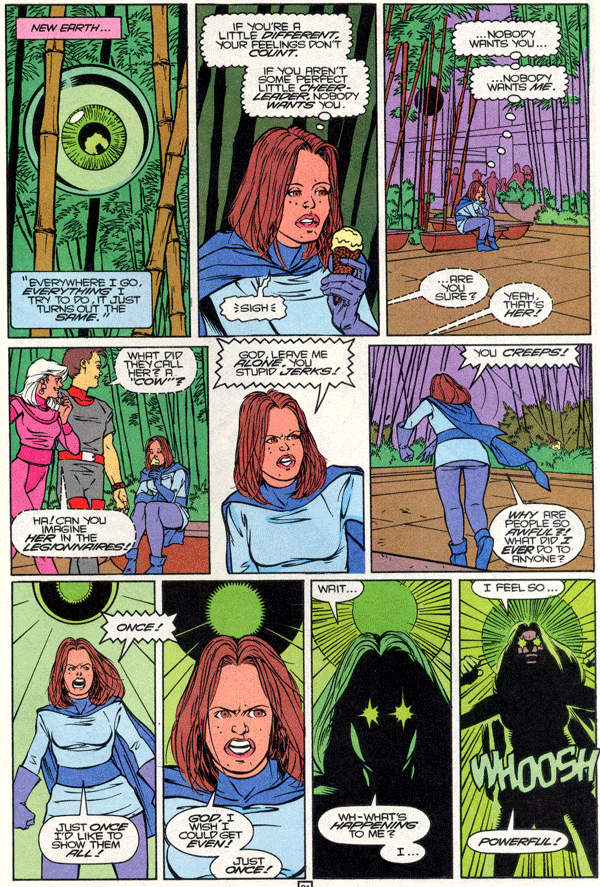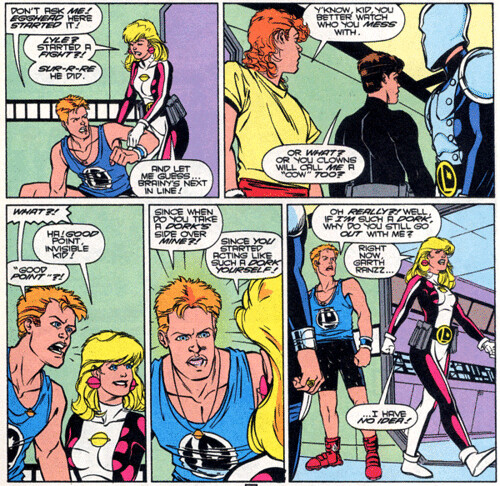Last week was an anomaly for me, in so far as I didn't watch any movies whatsoever (I did sort of half-listen to
Amadeus, but I can't say that counts as "watching" it). I did marginally better this week.
216. The highlight of the week was seeing
Plan 9 From Outer Space (1959, directed by Edward D. Wood, Jr.) on a big screen with an audience. Man, that's a pure, dyed in the wool pleasure, let me tell you. A little background: a local theater group is putting on a musical version of Plan 9--rockabilly, which suits it, I think--and this showing was a fundraiser. Several of the songs were performed prior to the movie and they were't bad at all. If anything, they were TOO good, because anything more than marginal competence is well and truly beyond the scope of
Plan 9. They had some trivia questions about the movie, too, and I won a pair of tickets to the play for knowing that the original name of the movie was "Graverobbers from Outer Space." In any event, let's dispense with the notion that
Plan 9 is the worst movie ever made. No movie that repays repeat viewings with such warm pleasures can possibly hold that title. It's not even the most inept movie ever made (anyone who's ever seen a film by, say, Ron Ormond or Al Adamson knows that Ed Wood had more imagination and enthusiasm than many of his contemporaries). For that matter, it's not even Ed Wood's worst movie.
Plan 9 is charming in its "let's put on a play" earnestness. And watching it a week after Pride month, I can't help but read it as a plea for tolerance towards gays, though Wood himself was "only a transvestite," as Tim Burton's biopic insisted. As an aside, it was kind of fun watching the alien ruler's eyes drift towards Eros's package in every scene they shared. Hilarious.
217.
Kung Fu Panda (2008, directed by Mark Osborne and John Stevenson) is all high concept and not so much a story. The sum total of the film is found in its title. The movie itself is almost an afterthought. But as such, it's not bad. Anyone who's seen a few kung fu movies will find no surprises. This is a cross between
The 36th Chamber of Shaolin and any number of Chang Cheh movies. As usual, Dreamworks' insistence on casting celebrity voices remains an unnecessary distraction. Visually, the movie is interesting for the way it tends to flatten out the 3-D computer animation, sometimes lapsing into 2-D animation outright. The best part of the movie, for me anyway, is the prologue which is animated 2-d. Along with the graphics over the closing credits, this made me wish that the whole movie had been made that way. Alas. It should be noted, however, that when it comes to computer animation, it's still Pixar first, and everyone else a distant second, a point hammered home by...
218. ...
WALL-E (2008, directed by Andrew Stanton), which sets the bar impossibly high. I love Pixar's movies. I do. But that love didn't prepare me for WALL-E, which is the studio's masterpiece. This is a movie of existential loneliness, of profound emotionality, and of visionary wonders. While the largely silent opening act of the movie has been rightly praised, I think I knew I was watching a legitimately great movie when it took time out from the ruthless mechanics of its story to let WALL-E and EVE delight in a weightless pas de deux. Oh, you can see Chaplin in this, and Keaton, and Harold Lloyd, and Jacques Tati, and Stanley Kubrick; this film is every bit their spiritual stephchild. Regardless, it's resolutely an entity unto itself. As we were leaving the theater, I said to my companion: "They're still going to be watching this 50 years from now." My companion said: "I can't believe they made a cockroach endearing."
219.
"Presto" (2008, directed by Doug Sweetland) is the short that accompanied
WALL-E, concerning a magician and a reluctant rabbit. This is probably not the best of the Pixar shorts, but it might be the funniest. It's certainly the one that feels most like a classic Looney Tunes short. It provided a good warm-up before plunging the audience into the melancholia of
WALL-E's first half-hour.
220. It had been my intention to show a Western to my guests this 4th of July, but to a one, they all bitched because they "don't like" Westerns. This kind of pissed me off, because I had planned to show
The Good, The Bad, and the Ugly, which has always seemed like the Western for people who claim not to like them. But be that as it may, let it never be said that I'm not a gracious hostess. I said, "A samurai movie it is, then," which was met with enthusiasm. Of course, the joke was on them, because I chose to show
Yojimbo (1962, directed by Akira Kurosawa), which, as you probably know, is
A Fistful of Dollars in Japanese drag.
Yojimbo is hilarious, whether it's Toshiro Mifune's nameless samurai saying "sorry, 3 coffins" to the undertaker or watching the forces of the two gang bosses line up against each other only to be too chickensh t to initiate the fight, there is comedy aplenty in this movie. I like to think of this movie as a satire of the Cold War, but you don't need any deep meanings to enjoy this. It's Kurosawa at his most cynical, as if he were channelling Billy Wilder, and making that cynicism all his own.


